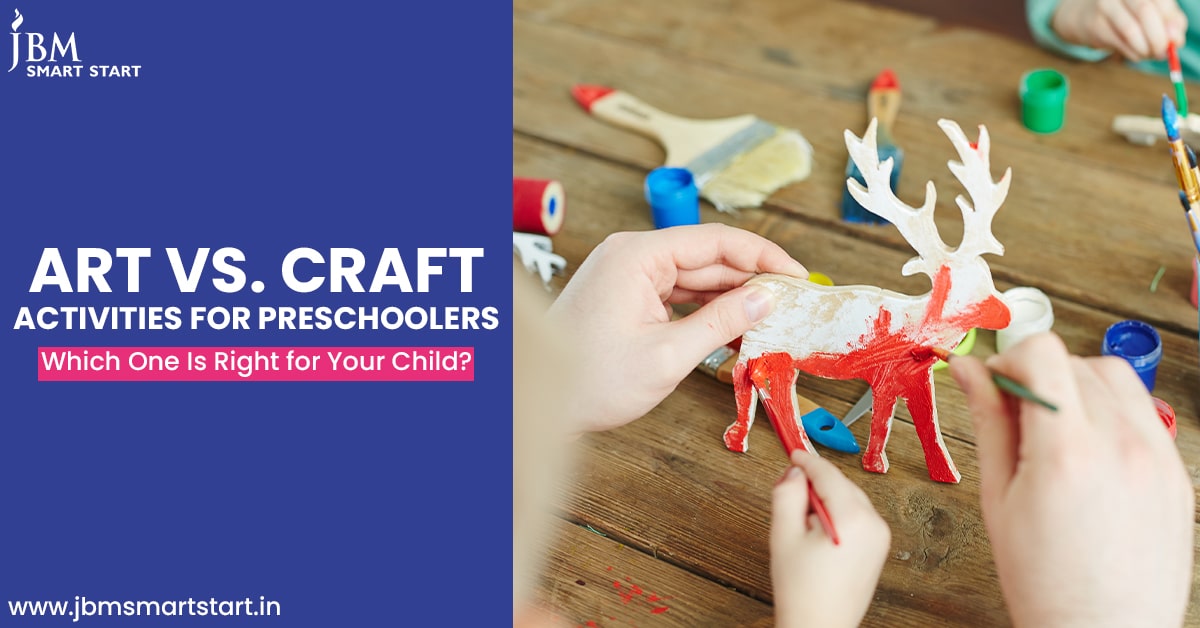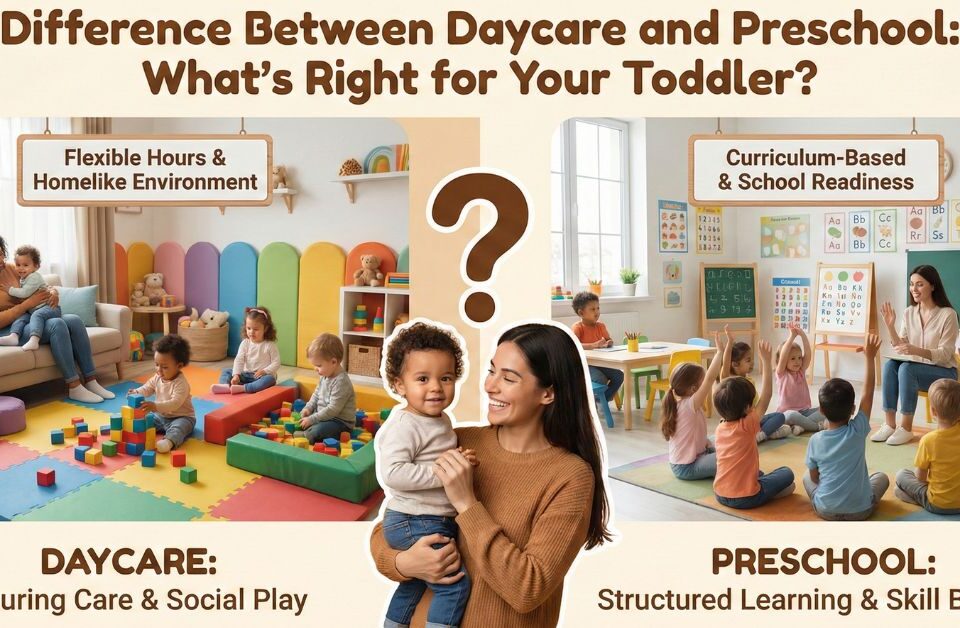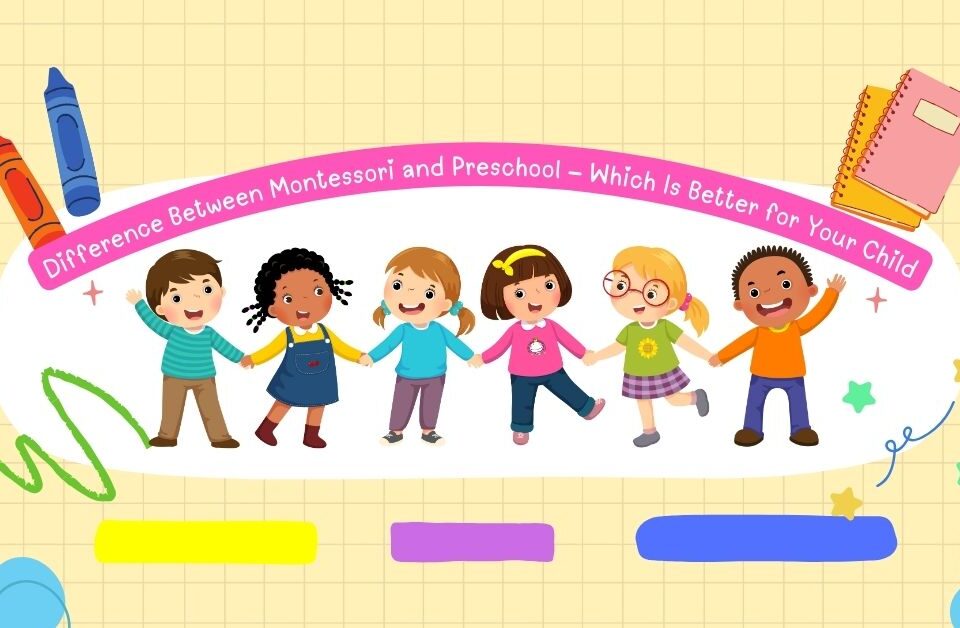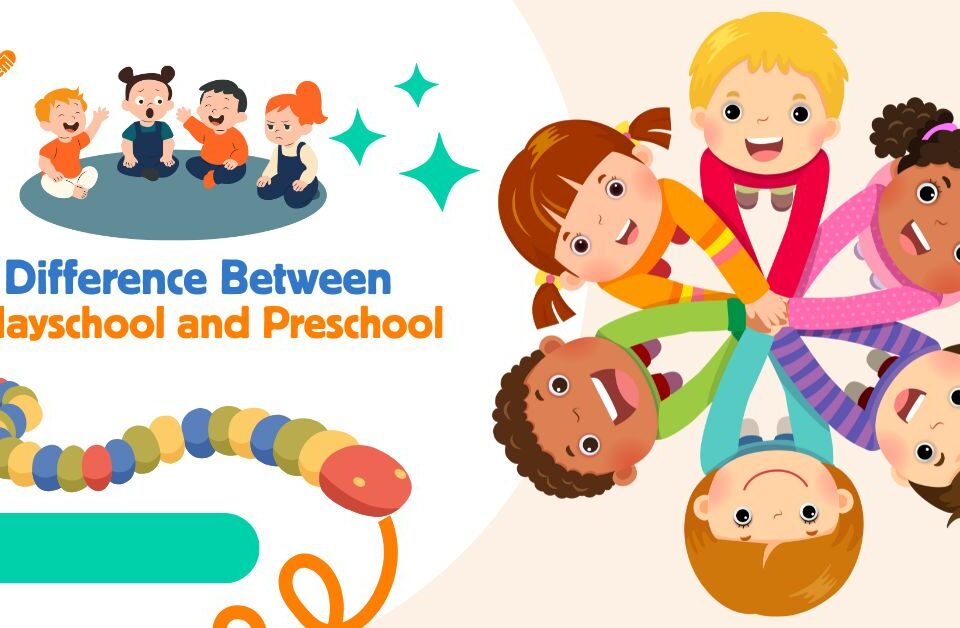
15 Easy and Fun Craft Activities for Preschoolers to Enjoy
January 28, 2025
Best Holi Craft Ideas for Kids: Fun & Creative Festival Activities
February 12, 2025The Difference Between Art and Craft Activities for Preschoolers: Which One is Right for Your Child?
Art and craft activities are essential for a preschooler’s development. Such activities are responsible for fueling their creativity, motor skills, and overall learning experience.
However, there’s often confusion about their differences and how each contributes to a child’s growth. Should your child spend more time on art activities for preschoolers or focus on craft activities for preschoolers?
This blog will help you understand both, their unique benefits, and which one might be right for your child.
What Are Art Activities for Preschoolers?
Art activities for preschoolers are open-ended and prioritise creativity over structure. These activities like painting, drawing, and sculpting let children freely express their thoughts and emotions.
Thus, the focus is not on creating a perfect outcome but on exploring their imagination with the help of colours, textures, and patterns. Through artistic activities for young children, preschoolers develop critical early childhood art development skills.
For example, a child painting a tree might blend colours to create leaves. This encourages them to explore their creativity while building motor and cognitive skills.
Moreover, creative activities for children allow them to express emotions they may not yet be able to verbalise. Hence, art can be considered a powerful tool for emotional development.
What Are Craft Activities for Preschoolers?
Craft activities for preschoolers, unlike art, involve structured tasks with a specific goal. Some of the examples include making greeting cards, assembling paper animals, or decorating photo frames.
These activities teach children to follow instructions, maintain focus, and successfully manage their tasks. Many handicraft ideas for preschoolers like creating paper flowers or popsicle stick houses are designed to improve motor skills. They also provide a sense of achievement on completion.
Preschool learning activities that involve crafts also encourage teamwork. For example, decorating a classroom banner in a group helps to develop social skills and a collaborative attitude.
Top Benefits of Art Activities for Preschoolers
1: Boosts Creativity & Imagination
Engaging in preschool activities like drawing or painting inspires children to think creatively. This freedom helps them develop problem-solving skills and innovative thinking.
2: Encourages Emotional Expression
Art activities for preschoolers also help them channel their feelings of happiness or frustration into their work.
3: Develops Fine Motor Skills
Activities like holding a paintbrush or moulding clay improve grip strength and hand-eye coordination. These are essential for future skills like writing.
4: Promotes Cognitive Growth
When children experiment with different materials and techniques, they learn to utilise their critical thinking and decision-making abilities.
Top Benefits of Craft Activities for Preschoolers
1: Improves Focus & Discipline
Craft projects require children to pay attention to details. This helps to boost their concentration.
2: Learns To Follow Goals
Children are bound to follow instructions for craft activities for preschoolers. This builds confidence when children achieve tangible outcomes.
3: Enhances Motor Skills
Cutting, folding, and glueing in crafts prepare children for tasks like writing and drawing.
4: Increases Social Interactions
Group craft activities encourage teamwork and improve communication skills.
Art vs Craft for Preschoolers: Key Differences and What They Teach Your Child
1: Process vs. Outcome
Art activities for preschoolers emphasise the process of creating without predefined rules. On the other hand, craft activities for preschoolers focus more on achieving a specific result with the help of step-by-step instructions.
2: Self-Expression vs. Structure
Art leads to preschool creativity activities. This allows children to express themselves freely. However, craft activities are more structured and require discipline and focus.
3: Flexibility vs. Goal-Oriented Tasks
Art is flexible and encourages experimentation. In contrast, craft is goal-oriented and offers a sense of accomplishment upon completion.
Choosing Between Art and Craft: Which Activity is Best for Your Child?
The choice between preschool art vs. crafts completely depends on your child’s interests and the skills you wish for them to learn.
You should choose art activities if your child enjoys imaginative play and loves to explore without boundaries. These creative activities for children are perfect for boosting their abstract thinking and emotional expression.
On the other hand, you can choose craft activities for your child if they thrive in structured environments and enjoy hands-on tasks with clear outcomes. Handicraft ideas for preschoolers like building a paper boat teach patience and problem-solving.
Ultimately, both arts and crafts activities for toddlers are essential for overall development. Hence, it’s important to find a balance between the two. This ensures your child benefits from creativity and structure to experience well-rounded growth.
5 Easy Tips to Engage Your Child in Art and Craft Activities Every Day
1: Set Aside Dedicated Time
It is important to allocate time daily for engaging in preschool activities by alternating between arts and crafts.
2: Build A Creative Space
You can dedicate a corner at home for arts and crafts activities for toddlers. This area should be stocked with supplies like paints, paper, scissors, and glue.
3: Encourage Exploration
It is highly recommended to let your child experiment with different materials during art activities for preschoolers. At the same time, you should guide them in structured craft activities for preschoolers.
4: Join Group Activities
Did you know that you can enrol your child in workshops or community events? They will be able to explore preschool learning activities in a social setting.
5: Use Everyday Materials
Finally, you can turn household items into art and craft supplies. For example, your children can use bottle caps for crafts or coffee filters for watercolour painting.
Final Thoughts: Why Both Art and Craft Are Crucial for Your Child’s Development
Art and craft are both invaluable in the upbringing of a child. It fuels their creativity and development. However, it is important to understand the key differences between preschool art vs. crafts. This will help you make informed decisions about which activities suit your child best.
While artistic activities for young children emphasise imagination and emotional expression, craft activities for preschoolers teach focus, discipline, and practical skills. The best approach is to incorporate a mix of both so that your child reaps the benefits of each.
JBM Smart Start is one of the best schools near Greater Noida. This educational institution integrates engaging arts and crafts activities into the curriculum. This helps to inspire every child’s imagination and skills.
Frequently Asked Questions About Art and Craft Activities for Preschoolers
Q1: What is the difference between art and crafts?
Ans: Art focuses on creativity and self-expression. This allows children to explore their imagination freely. Crafts, on the other hand, are structured activities with a specific goal. They teach children discipline and the importance of fulfilling their targets.
Q2: Which is best: art or craft?
Ans: Art and crafts are both equally important for a child’s development. Art enhances creativity and emotional expression, while crafts build focus, motor skills, and problem-solving abilities. A balance between the two is highly recommended for holistic growth.
Q3: Are arts and crafts good for kids?
Ans: Yes, arts and crafts are excellent for children. They encourage creativity, improve motor skills, boost cognitive development, and teach problem-solving, teamwork, and emotional expression. Hence, they’re essential components of early learning.
Q4: Can 3-year-olds do crafts?
Ans: Yes, 3-year-olds can engage in simple craft activities such as finger painting, glueing shapes, or making paper crafts. These activities help to develop motor skills, hand-eye coordination, and focus while also being fun and engaging.
Q5: What do children learn from art and craft activities?
Ans: Children learn creativity, critical thinking, emotional expression, teamwork, focus, and motor skills through art and craft activities. These activities also boost confidence and prepare children for more structured learning in the future.




